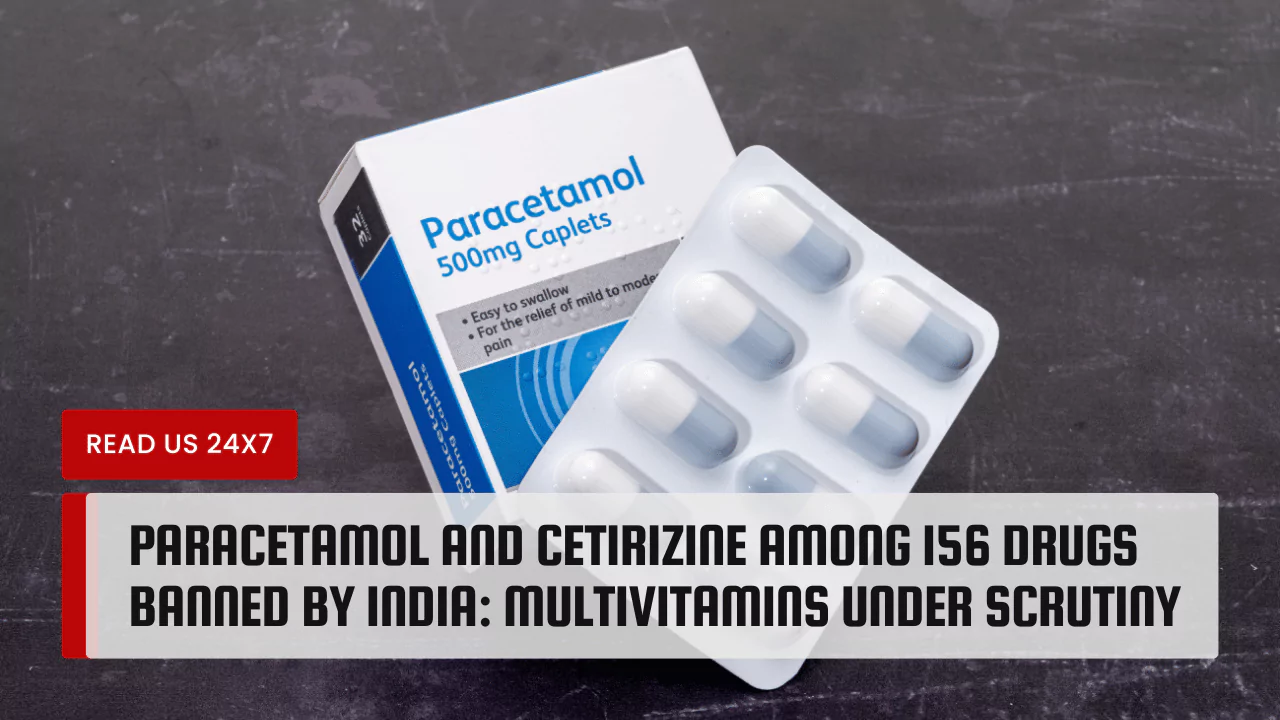The Indian government has banned 156 drugs, including paracetamol and cetirizine. This decision aims to protect public health. Additionally, the government is reviewing 34 multivitamins to determine their safety and effectiveness.
Why Were These Drugs Banned?
The ban results from concerns about fixed-dose combinations (FDCs). These are medicines that mix different drugs into one. An expert committee found that many of these combinations were unsafe. They noted that several FDCs had no clear benefit to patients. Some could even cause harm.
For example, mixing paracetamol with other drugs can lead to side effects. The government wants to ensure that everyone takes safe and effective medicines. This is why they decided to remove these drugs from the market.
Key Facts About the Ban
- Number of Drugs: 156 drugs are banned.
- Banned Drugs: Notable mentions include paracetamol and cetirizine. These are commonly used for pain and allergies.
- Reason for Ban: The drugs were deemed irrational and harmful.
- Expert Review: A group of experts looked at the safety of the drugs. Their findings led to the ban.
- Legal Basis: The ban follows the Drugs and Cosmetics Act, of 1940.
Focus on Paracetamol and Cetirizine
Paracetamol is often used to reduce fever and relieve pain. It is common in households throughout India. Cetirizine is an antihistamine. It helps relieve allergy symptoms like sneezing and runny nose.
Mixing paracetamol with other substances can sometimes lead to serious health risks. The government acted on recommendations to improve public health. The objective is to make sure medicines are safe for the public.
What Comes Next?
In addition to the banned drugs, the government will look at 34 multivitamins. These are supplements that people often take to improve their health. The review will check if these multivitamins provide any real benefit.
Many people take multivitamins as a part of their daily routine. However, not all supplements are proven to be effective. The goal of the review is to ensure that what people are taking is beneficial and safe.
Potential Risks of Combination Drugs
Combination drugs can sometimes cause more harm than good. Doctors and health experts warn about the dangers of mixing different medications. Some combinations may lead to unexpected side effects. These can sometimes be severe.
For instance, a combination of certain medications may increase the risk of allergies. In some cases, people may suffer organ damage or other health issues. Regulatory agencies, like the Indian government, step in to make sure people are safe. This means deciding which drugs can stay on the market and which cannot.
Past Actions and Future Measures
This is not the first time the Indian government has banned drugs. In the past, there were other drug bans, including 344 combinations in 2016. The government continuously monitors the drug market for safety.
Another example is the ban on 14 cocktail drugs in June of the previous year. These drugs had similar concerns as the current list. The aim is always to better public health. The government takes the recommendations from the Drugs Technical Advisory Board seriously.
Importance of Patient Safety
Patient safety remains a top priority. Doctors need to prescribe medications that work well together. If a drug doesn’t have strong evidence showing it is helpful, it should not be on the market.
The ban shows that the government is committed to ensuring that drugs sold in India are necessary and safe. This can help reduce cases of misuse or unintentional harm.
Conclusion
The Indian government has justified its decision to ban 156 drugs, including paracetamol and cetirizine, due to safety concerns and lack of effectiveness. The review of multivitamins shows a continued commitment to patient safety. The ongoing scrutiny of drugs aims to make sure that health products are beneficial for everyone. Society must understand the impact of medications to ensure health remains a priority.



